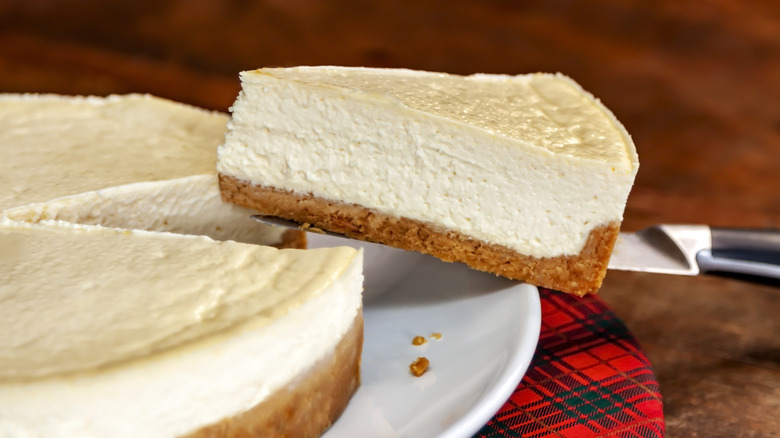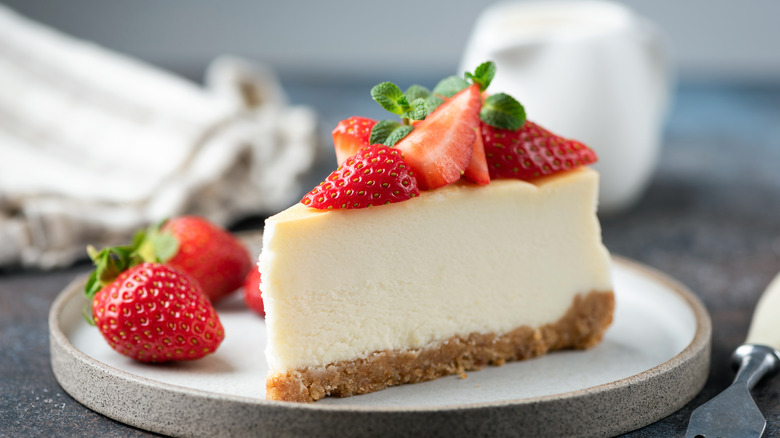The Ancient Greek Origins Of Cheesecake
Cheesecake is practically synonymous with modern indulgence. This wasn't always the case, however, as the history of cheesecake is one of ancient ingenuity, empirical conquest, and cultural diffusion. The story begins on the Greek island of Samos, where anthropologists discovered molds designed specifically for cheese, dated to around 2,000 B.C.E. While the exact date of cheesecake's invention is unknown, we do know that it was featured at the Olympic games in 776 B.C.E.
Ancient Greek cheesecake varied greatly from the version we all know and love today. The first known written recipe for cheesecake came in 230 C.E. from Athenaeus, a Greek writer. At the time, cheesecake was made from just flour, honey, and cheese. The mixture was then stirred together and baked until set on an earthenware griddle.
For thousands of years, cheesecake was exclusively a Greek treat. That all changed after the Roman Empire invaded. They modified the traditional recipe, adding eggs and crushed pieces of cheese. The Romans adored this new style of cheesecake, even adding it to their pastries as a filling. The empire's cultural influence cannot be understated, and as it expanded, other European countries caught on, like England, where a version of the sweet treat was called sambocade after the island of Samos. Sambocade was a unique take on cheesecake flavored with elderflowers and rose water that gave it a delicate, floral taste. For centuries afterward, England produced countless new cheesecake recipes, and the dessert eventually made its way to the American colonies.
When cheesecake arrived in America, it morphed into its modern version
As the American colonies grew in size, European immigrants carried with them their favorite cheesecake recipes. Martha Washington famously loved cheesecake, publishing a cookbook with multiple versions of the dessert. One such recipe, called curd pudding, was simply a sweetened cheese curd mixture baked together without a crust. While calling a cheesecake pudding might seem odd, calling it a cake is equally inaccurate. Despite its name, cheesecake isn't technically cake since it contains no leavening. Instead, cheesecake, both in ancient and modern forms, is a baked custard pie.
It wasn't until the mass production of cream cheese around 1875 that the classic New York-style cheesecake recipe could be created. This was done for the first time by the brand Philadelphia, which, surprisingly, was based out of New York. There's a common myth that Philadelphia mistakenly invented its most popular product, but no, cream cheese wasn't accidentally invented. Instead, American cream cheese is purposely similar to the French Neufchâtel cheese, which has existed for upwards of 1,000 years. As such, cream cheese has existed in the U.S. since the late 1700s, but it wasn't popularized until much later. After being mass-produced, New Yorkers began to enjoy the New York-style cheesecake at bakeries, cafés, and, of course, the world-famous Junior's Restaurants.

